Community gardens, green space and the urban heat island effect | One Waterfront Ambassadors weekly wrap-up
The second week for the Waterfront Ambassadors kicked off with the addition of a new team member, and more learning about green solutions for our vulnerable outdoor spaces.
Monday saw the group return to Eastie Farm’s second location, Nuestro Jardin (“Our Garden”), where the Ambassadors met their newest team member, Clifford, and helped the garden’s manager with some maintenance. The group had previously helped to tidy and clean the area, so it turned into a learning experience when they returned to find trash scattered around in the grass. “I think the Ambassadors were a little upset by the fact that people would mistreat this area and that they would have to pick up after them,” Program Manager Aubrey described. “It had an impact.”
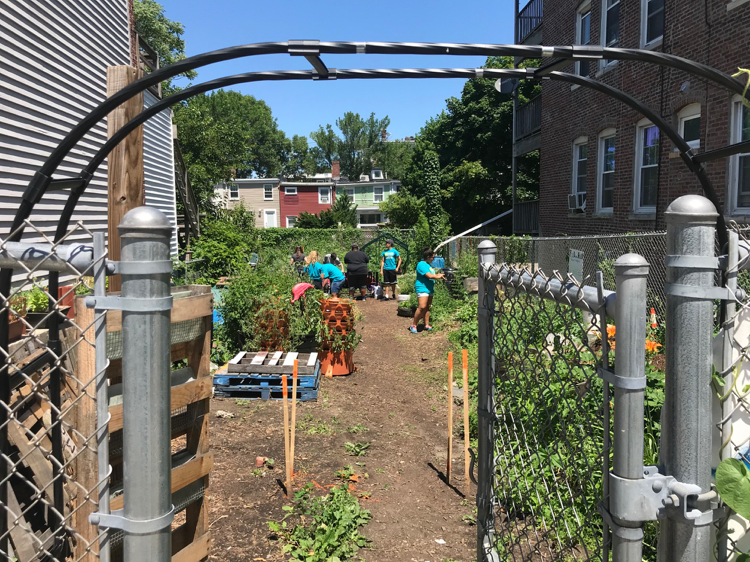
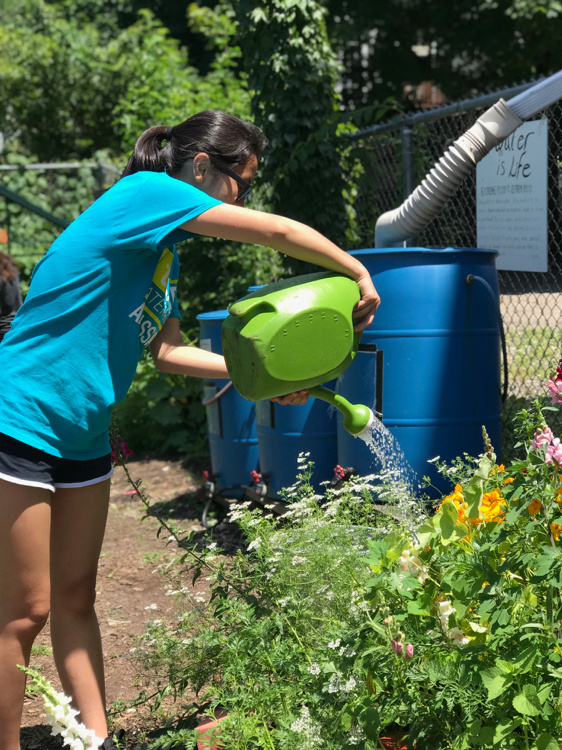

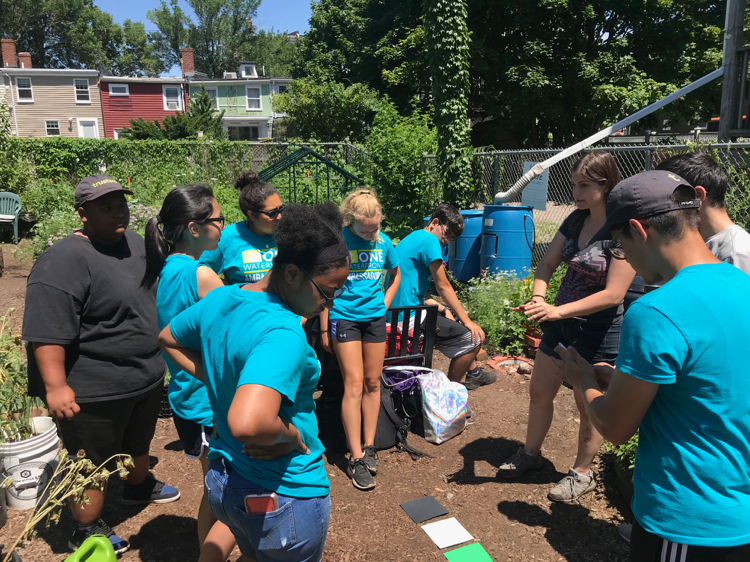
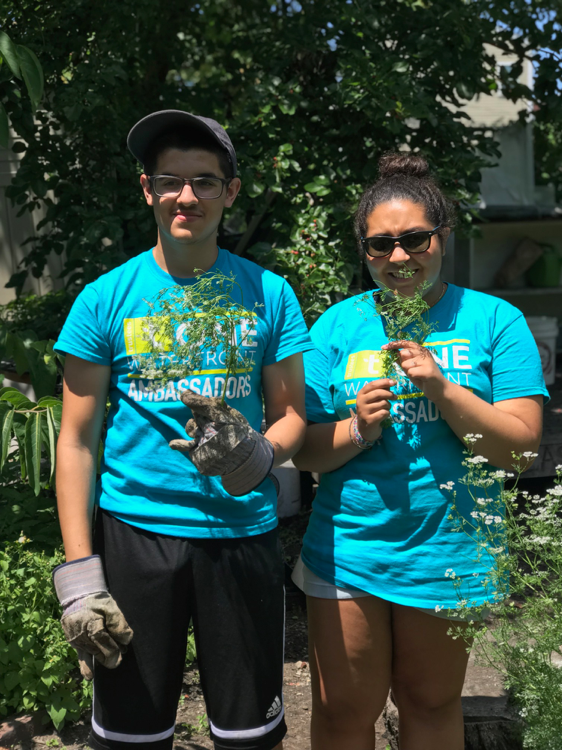
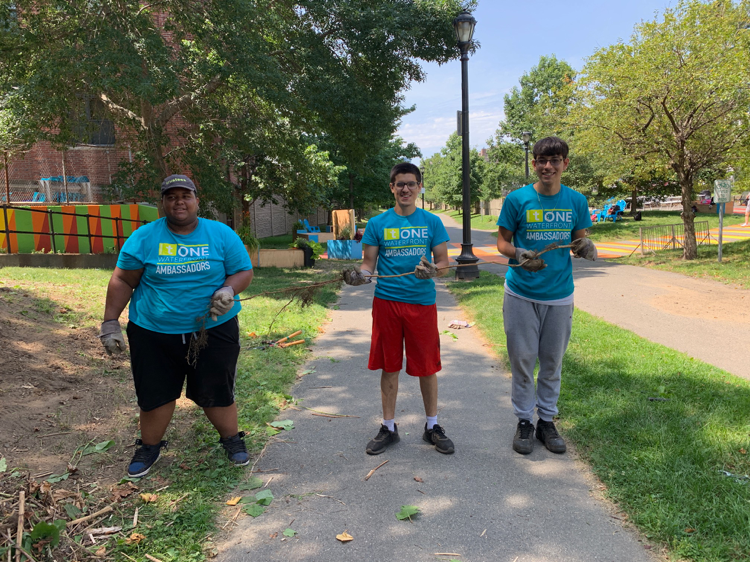
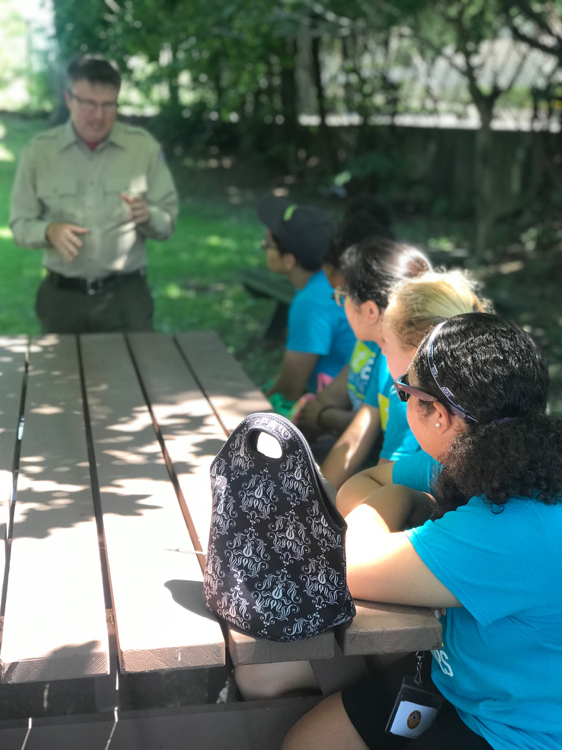
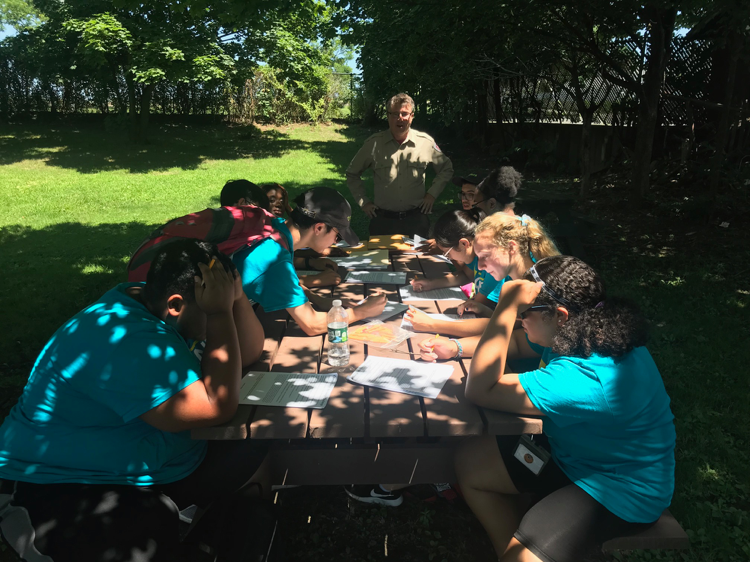
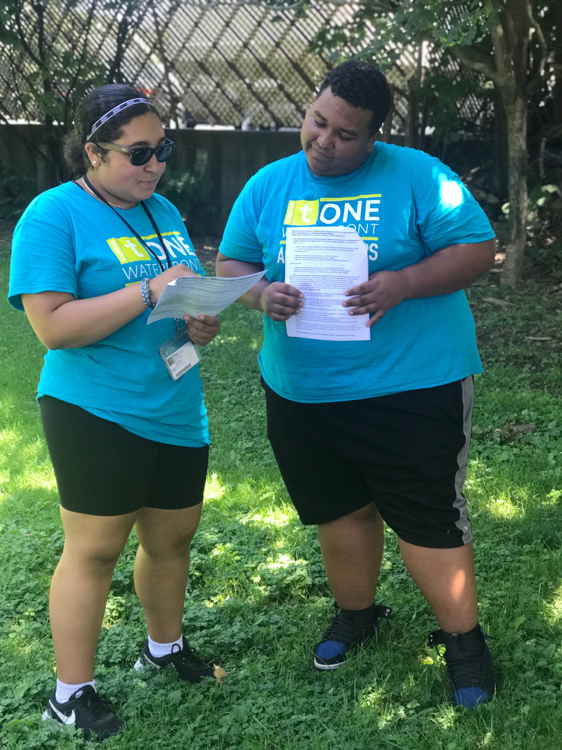
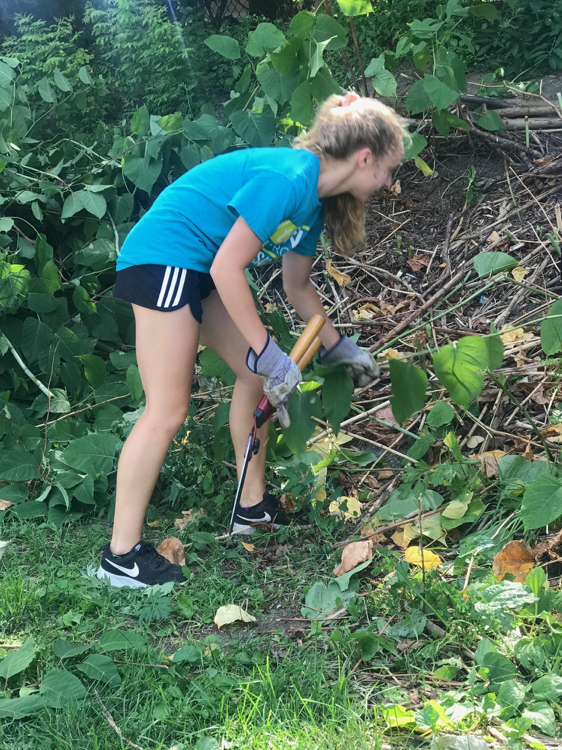
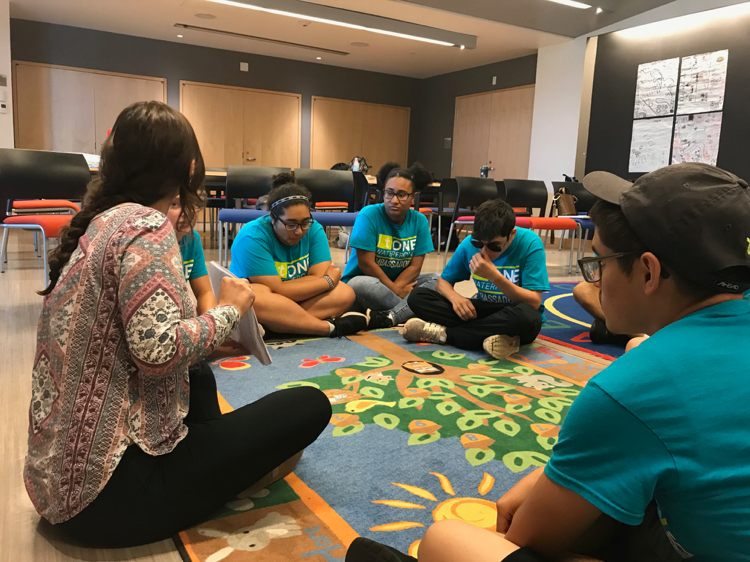
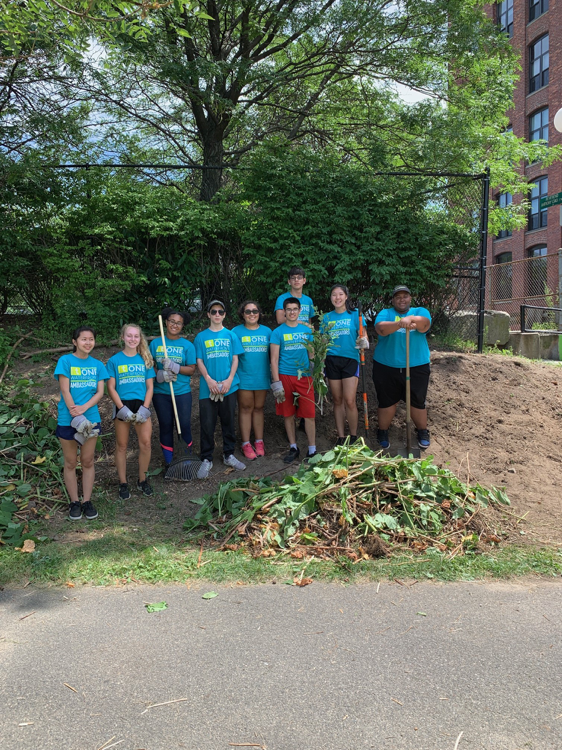
A new activity this week was an identification challenge. The Ambassadors were split into teams and challenged to identify a plant as fast as they could. The group has been working hard to build their knowledge of the sites they visit, from the history all the way down to the plants and features at the sites. Program managers Aubrey and Ashley enjoy seeing the Ambassadors take the knowledge they learn from one site to the next—the group is eager to learn and to apply those lessons! One of the learnings this week has especially centered around resilience. Eastie Farm has been an excellent example of what a community garden can do for the resilience of a neighborhood, in helping to address food insecurity by providing an affordable source of produce, by absorbing heat and providing a cooler area during hot summer days, and also by absorbing rainwater and helping to build resilience against flooding during storms.
Toward the end of the week, the temperatures began to soar, and this became a good learning opportunity, as the Ambassadors could see for themselves the effects of an “urban heat island” (when cities are warmer than surrounding suburban and rural places) and how green spaces such as community gardens and the Greenway play an important role in reducing heat in East Boston.
According to the EPA, “the annual mean air temperature of a city with 1 million people or more can be 1.8–5.4°F (1–3°C) warmer than its surroundings. In the evening, the difference can be as high as 22°F (12°C).” In Boston, a city of approximately 700,000 residents, a steady rise in temperatures over the years has amounted to an increase of 1.8 degrees Fahrenheit since 1970, according to a vulnerability assessment by Climate Ready Boston, and by the 2050s heat-related deaths (currently 2.9 per 100,000 people) are projected to jump by as much as 200%-300%.
“Heat is a chronic hazard, a stress that the city faces every year,” Boston’s Climate Ready report states. “As average temperatures rise and the frequency, duration, and intensity of heat waves increase, heat mortality rates will also rise. Temperatures are hottest in areas of the city that experience the urban heat island effect, but on very hot days, the entire city is at risk for the health impacts of extreme heat, especially those with health or other physical challenges, such as older adults or those with medical illness. The heat will increasingly stress the city’s energy supply and related infrastructure as people seek ways to cool down.”
In maps of urban heat islands, hot spots are typically found to be in areas such as dense neighborhoods and large parking lots, while the cooler parts can be found in shady areas such as parks, gardens, and other green, open space. The group visited several different areas and could see for themselves the marked differences. As temperatures continue to rise due to climate change, having more green space will become increasingly important for the wellbeing of the city’s residents, visitors and workers.
The second week wrapped up with a fun and informative lesson from DCR Naturalist Matt Nash in Revere. The Friday activity guided the Ambassadors through a “nature-inspired design” or “biomimicry” lesson. Each of the Ambassadors had the opportunity to learn what resilience elements were important while creating infrastructure with climate change in mind, and had the opportunity to design their own resilient visitors center using lessons learned from nature.
Week three has more community activities in store, as well as a lesson in financial literacy from Bank of America! We’re looking forward to bringing you more updates as the program progresses.
##
To learn more about the One Waterfront Ambassadors program, visit: onewaterfront.thetrustees.org/ambassadors
